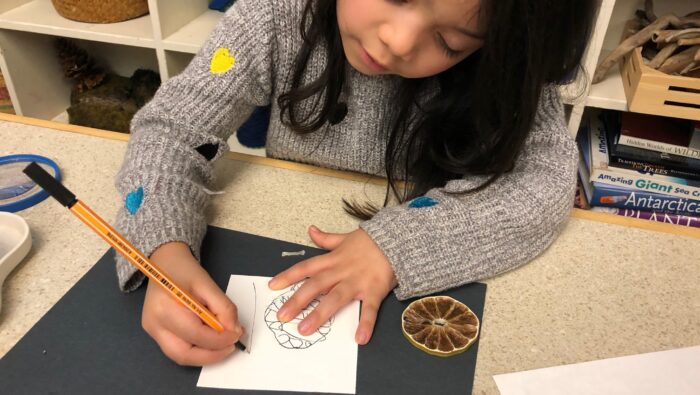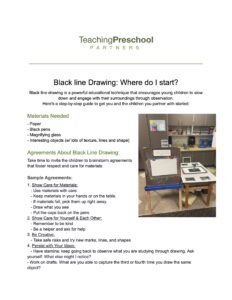
Black line drawing is more than just an art activity; it is an educational process that invites children into a deeper connection with the world around them. By slowing down and engaging in the act of observation, children are encouraged to explore the intricacies of their environment, fostering a deeper understanding and appreciation of it. This method nurtures creativity and enhances cognitive, emotional, and social skills, making it an invaluable tool for educators and caregivers.
What are the benefits of black line drawing?
Children experience numerous cognitive, emotional, and social benefits by observing and capturing their environment through drawing.
Regulating the nervous system
Drawing can serve as a powerful tool for regulating the nervous system by promoting a state of relaxed alertness and reducing stress. When individuals engage in the creative process of drawing, it encourages a state of flow, allowing them to immerse themselves fully in the activity. This focused attention can help shift the brain’s activity from a state of anxiety to one of calmness, activating the parasympathetic nervous system. The rhythmic motions of pen on paper can also produce a meditative effect, similar to mindfulness practices, ultimately helping to alleviate symptoms of tension and anxiety.
Enhances Observation Skills
Black line drawing requires children to closely examine objects, fostering keen observation skills. This activity encourages them to notice details they might otherwise overlook, promoting curiosity about the world around them. As they learn to translate what they see onto paper, they develop critical thinking skills that aid in problem-solving and decision-making.
Boosts Fine Motor Skills
Drawing involves various hand movements that are essential in developing their fine motor skills. As children learn how to hold and control the movement of blackline pens, they improve hand-eye coordination and dexterity. These skills are fundamental not only in art but also in everyday tasks.
Promotes Language Development
Describing their drawings enhances children’s vocabulary and language skills. As they strive to articulate what they see and represent on paper, they often search for new words to express their ideas to others. This practice nurtures communication skills and enriches their overall linguistic abilities.
Fosters Connection
Black line drawing encourages children to offer loving attention to their environment, often leading them to appreciate nature and their community. Whether drawing a tree on the playground or their friend’s eyes, children learn to value the intricacies of their surroundings. This connection builds empathy and an understanding of their role within a larger social and environmental context.
In this guide, we outline the essentials of black line drawing. You will find everything you need to start using black line drawing, from the materials needed to the steps involved.

To download all 5 pages of this document click the link below.